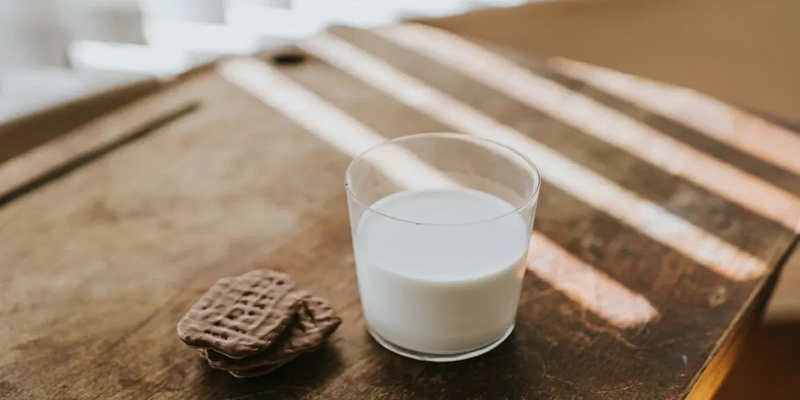Do you suffer from sniffles and nosebleeds due to a dry nose? You're not alone. Many people experience dry noses for various reasons, whether a change of season or allergies. Thankfully, there are easy ways to relieve that pesky dryness.
In this blog post, we'll explore some of the simple remedies and treatments available at home so that you can restore moisture to your nasal passages and eliminate any irritation or discomfort associated with a dry nose.
Lifestyle and Environmental Modifications
Lifestyle and environmental modifications are crucial in treating a dry nose and alleviating its uncomfortable symptoms. By making simple adjustments to your daily routine and surroundings, you can effectively restore moisture to your nasal passages.
One of the fundamental steps in combating dry noses is to ensure proper hydration. Drinking adequate water throughout the day helps maintain overall moisture levels in your body, including the nasal tissues.
Staying hydrated can prevent dryness and promote a healthier nasal environment. Another helpful modification is using a humidifier in your living space. Humidifiers add moisture to the air, increasing humidity levels and preventing dryness in your nasal passages.
This is particularly beneficial during dry seasons or in regions with low humidity. By running a humidifier, you can create a more comfortable and moisturized environment for your nose. Avoiding irritants is equally important in managing a dry nose.
Tobacco smoke contains numerous irritants that can worsen dryness and trigger nasal discomfort. Quitting smoking or avoiding secondhand smoke exposure can significantly improve your nasal health.
Also, harsh chemicals in cleaning products, perfumes, and aerosols can irritate the nasal passages. Opting for natural or fragrance-free alternatives can minimize irritation.
Finally, dry climates can exacerbate dry nose symptoms. In arid regions or during winter, when the air is typically drier, taking proactive measures to add moisture to the environment becomes essential.
By implementing these lifestyle and environmental modifications, you can effectively combat a dry nose and experience relief from its bothersome symptoms. Remember, maintaining proper hydration, using a humidifier, avoiding irritants, and considering your climate are simple yet effective strategies for promoting nasal moisture and comfort.
Nasal Irrigation
Nasal irrigation is a natural remedy to treat dry noses and sinus irritations. This technique involves flushing your nasal passages with a saltwater solution, or saline, to eliminate mucus buildup and reduce congestion.
Not only is this a safe and gentle method of clearing the nose, but it can also increase moisture levels in the nasal cavities. This is because the saline solution is composed of water, which helps rehydrate your nasal passages and reduce irritation due to dryness.
Regular nasal irrigation can improve sinus health and prevent infections by washing away bacteria and allergens. It's important to note that there are several methods of nasal irrigation. Some require a neti pot and preservative-free saline solution, while others involve irrigators such as Sinus Rinse or NeilMed Naspira.
Regardless of your chosen method, nasal irrigation effectively reduces dryness in your nose and improves overall sinus health.
Home Remedies

Home remedies can be effective in providing relief for dry nose symptoms.
Here are three commonly used home remedies:
Steam inhalation:
Steam inhalation involves inhaling warm, moist air to help moisturize the nasal passages. It can be done by filling a bowl with hot water, adding a few drops of essential oils like eucalyptus or peppermint (optional), and leaning over the bowl with a towel draped over your head to create a steam tent.
Breathe deeply through your nose for about 5-10 minutes. The steam helps to hydrate the nasal tissues, soothe irritation, and alleviate dryness.
Nasal massage:
Nasal massage can improve blood circulation and stimulate the production of natural nasal secretions, providing moisture to dry nasal passages. Gently massage the sides of your nose with your fingertips in a circular motion for a few minutes.
You can also massage the areas around your sinuses by applying gentle pressure with your fingertips and moving in a circular motion. This can help relieve congestion, enhance moisture, and promote overall nasal comfort.
Warm compresses:
Applying warm compresses to your face can help alleviate dry nose symptoms. Soak a clean washcloth in warm water, wring out the excess, and gently place it over your face, focusing on the nasal area. Leave it on for a few minutes, and repeat as needed.
The compress's warmth helps increase blood flow to the nasal tissues, improving moisture levels and reducing dryness.
Medical Interventions

Prescription nasal sprays are medical interventions commonly used to treat dry noses and related conditions. These sprays contain medications that can effectively alleviate symptoms and provide long-term relief.
Here are some key points regarding prescription nasal sprays:
Types of prescription nasal sprays:
There are different types of prescription nasal sprays available, including:
Steroid nasal sprays:
These sprays contain corticosteroids, which help reduce inflammation in the nasal passages, relieving dryness, congestion, and other nasal symptoms.
Antihistamine nasal sprays:
These sprays contain antihistamines, which can relieve allergy-related symptoms, such as nasal congestion and itching.
Combination nasal sprays:
Some sprays combine a steroid and an antihistamine to address multiple symptoms, such as inflammation and allergies.
Preventive Measures
Preventive measures are crucial in managing and preventing a dry nose. By implementing the following preventive measures, you can maintain nasal health and reduce the occurrence of dryness and related symptoms:
Regular nasal hygiene:
Practicing regular nasal hygiene is essential in preventing a dry nose. This includes gently blowing your nose when necessary and using soft tissue or disposable nasal wipes. Avoid excessive or forceful blowing, as it can further irritate and dry the nasal passages.
Adequate humidity in the living environment:
Maintaining adequate humidity levels in your living environment prevents a dry nose. Dry indoor air can contribute to nasal dryness. A humidifier can help add moisture to the air, especially during dry seasons or in regions with low humidity.
FAQs
What are some ways to treat a dry nose?
There are several ways to treat a dry nose. The most important aspect of treating a dry nose is to keep the nasal passages moist. This can be done in various ways, such as using saline nasal sprays or humidifiers. Additionally, avoiding irritants like smoke and other allergens can help reduce dryness in the nose.
Why does a dry nose happen?
Low humidity levels often cause a dry nose. Environmental factors, such as cold temperatures or windy weather, can also cause a dry nose. Additionally, certain medications and allergies can lead to dryness in the nasal passages.
What are some common symptoms of a dry nose?
Common symptoms of a dry nose include itching, flaking, and general irritation. Some people may also experience a burning sensation in their nose or a sinus headache.




